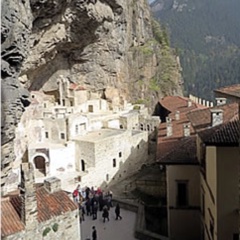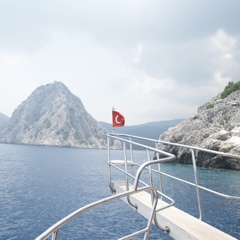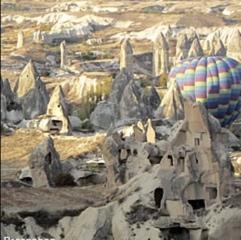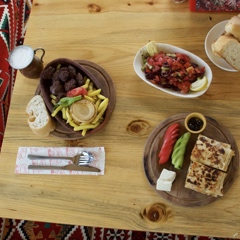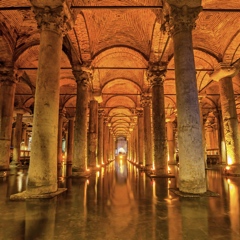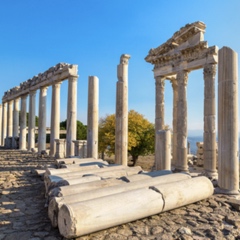Harran, 47 km (29 miles) south of Şanlıurfa in southeastern Turkey (map), looks to be as old as the Bible.
In fact, it’s even older.
In the Book of Genesis (Chapter 11, Verse 31) it says the Patriarch Abraham lived here for awhile:
“And Terah took Abram his son, and Lot the son of Haran his son’s son, and Sarai his daughter-in-law, his son Abram’s wife; and they went forth with them from Ur of the Chaldees, to go into the land of Canaan; and they came unto Harran, and dwelt there.”
The most distinctive aspect of Harran (HAH-rahn, pop. 7000) is its mud beehive houses, and you can visit models of these at the Harran Kültür Evi (Cultural Center).
Harran (officially named Altınbaşak) also has a kale(fortress dating at least from Fatimid times (11th century), city walls, an 8th-century Ulu Cami (Great Mosque) and, a short drive east of Harran, sights such as the Seljuk Turkish Han el Ba’rur caravanserai, ancient Shuayib City, and the 1800-year-old remains of a sun-worshipper temple at Sogmatar.
For the story of how a picture of three smiling Harran girls got onto the cover of the second edition of my Lonely Planet guide to Turkey, and why it almost caused a diplomatic incident, see my Bright Sun, Strong Teaexcerpt entitled “Diplomatic Démarche.”
Getting to Harran from Şanlıurfa is easy, with hourly minibuses during the day. Minibuses also run from Şanlıurfa to the Syrian border at Akçakale and will drop you at the intersection of the Harran road, but then it’s a 10-km (6-mile) hike eastward under the broiling sun, or, if you’re lucky, a ride hitched with a passing vehicle—if any come along.
The nearest airport is at Şanlıurfa.
Distances & Travel Times
Akçakale (Syrian Border): 25 km (16 miles) S, 25 minutes
Şanlıurfa: 47 km (29 miles) N, 1 hour



